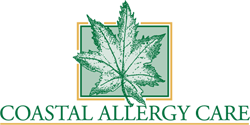What is Mold?
Molds are microscopic fungal organisms. They grow as networks of interlocking filaments that spread on and into organic matter, leading to its decomposition. When clusters of these filaments become large enough, they are visible as fuzzy growths of mold or mildew. Bread mold is a familiar example. Mold reproduces by releasing spores into the air.
Where are Molds Found?
Molds are found primarily in warm, dark and damp locations. Molds obtain their energy by digesting other organic matter and they need moisture. Molds generally grow out doors, but, if the humidity is high enough, can grow indoors as well. They do not have the clearly defined seasons that pollens do, and are absent in outdoor air only if there is snow on the ground. They can grow on grass and on the bark of trees, and are plentiful in fallen leaves and other decaying vegetation. Mold spores are easily released while mowing the lawn and often cause allergic symptoms. Indoors, they live in areas of high humidity, such as basements or poorly ventilated bathrooms. Or in any area that has been flooded or leaked into from plumbing problems, etc.
What can be Done to Decrease Exposure to Mold?
Clean your home:
- 1Use diluted bleach to eliminate visible mold growth
- 2Avoid carpets in bathrooms
- 3Remove any carpeting that has been installed directly on basement concrete floors
Control your air:
- 1Keep humidity under 50{b6733c48c237c10037239aa24abd1775ac19f0be212ae6635afe8b41e91f49ae} by using air conditioning- possibly supplemented with dehumidifiers.
- 2Avoid over-humidification
- 3Do not store firewood indoors
Repair:
- 1Leaking shower enclosures, sinks, or pipes.
- 2Roof leaks
- 3Sprinkler wetting of walls.

